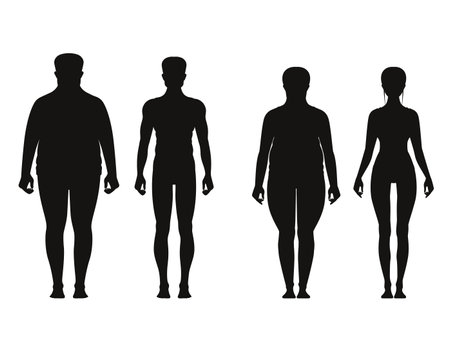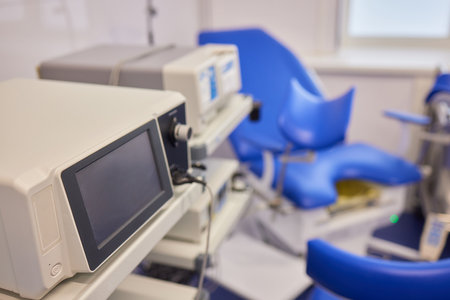Foundations of Assistive Technology in Occupational Therapy
Assistive technology has played a crucial role in the development of occupational therapy (OT) in the United States. From its earliest days, OT professionals have looked for ways to help people with disabilities participate more fully in daily life. The roots of assistive technology can be traced back to the early 20th century, when rehabilitation science began to take shape and new devices were developed to support wounded soldiers returning from World War I.
The Origins: Pioneers and Early Innovations
Occupational therapy emerged as a profession during a time of significant social and medical change. Key pioneers like Eleanor Clarke Slagle, George Edward Barton, and Susan Tracy recognized the importance of adapting environments and tools for people with physical or mental challenges. Their work set the stage for using technology—simple or advanced—to assist individuals in regaining independence.
Key Figures and Their Contributions
| Pioneer | Main Contribution |
|---|---|
| Eleanor Clarke Slagle | Promoted habit training and adapted activities for mental health patients |
| George Edward Barton | Emphasized environmental modifications after injury or illness |
| Susan Tracy | Developed therapeutic use of everyday crafts and tools |
Early Devices: Simple Tools with Big Impact
The first assistive devices used in OT were often simple adaptations. These included modified eating utensils, custom splints, and wheelchairs. As technology advanced, so did the options available. For example, in the 1940s and 1950s, innovations such as adjustable hospital beds and mobility aids became more common. These devices helped therapists tailor interventions to each client’s specific needs.
Examples of Early Assistive Devices in OT Practice
| Device | Description | Purpose |
|---|---|---|
| Modified Utensils | Thicker handles or angled spoons/forks | Improve grip and independence at mealtimes |
| Custom Splints | Molded supports for hands or arms | Aid healing and maintain function after injury |
| Wheelchairs (Manual) | Self-propelled or attendant-pushed chairs | Enhance mobility indoors/outdoors |
| Communication Boards | Pictorial boards for nonverbal individuals | Facilitate communication with caregivers/therapists |
The Emergence of Rehabilitation Science in America
The United States played a key role in shaping rehabilitation science as a formal discipline. After both World Wars, there was a surge in demand for services that could help veterans return to active life. This need led to increased funding for research, development of new technologies, and growth of academic programs in occupational therapy. Organizations such as the American Occupational Therapy Association (AOTA) began promoting best practices and encouraging innovation within the field.
2. Historical Milestones and Legislative Impact
Understanding the journey of assistive technology (AT) in occupational therapy means looking back at some key developments and laws that changed how people with disabilities access tools and support. Over the decades, several breakthroughs and pieces of legislation have shaped the landscape, making AT more available, effective, and inclusive for everyone who needs it.
Major Historical Developments in Assistive Technology
The use of assistive devices began long before modern technology. Early examples include simple wooden prosthetics or basic wheelchairs. As technology advanced, so did the options for individuals with disabilities. The late 20th century saw a surge in electronic and computerized devices, allowing for more personalized solutions in occupational therapy.
| Year | Milestone/Development | Impact on Occupational Therapy |
|---|---|---|
| 1960s-1970s | Introduction of electronic hearing aids, powered wheelchairs | Enhanced independence and participation in daily activities |
| 1980s | Rise of personal computers adapted for accessibility | Began integrating computer-based interventions in therapy plans |
| 1990s-present | Smart technologies (voice recognition, apps), environmental control units | Expanded opportunities for customization and remote access to therapy tools |
Landmark Legislation Shaping Assistive Technology Access
Two major U.S. laws— the Americans with Disabilities Act (ADA) and the Individuals with Disabilities Education Act (IDEA)—have been especially influential in making assistive technology more accessible to those who need it.
The Americans with Disabilities Act (ADA)
The ADA was signed into law in 1990. It is a civil rights law that prohibits discrimination against individuals with disabilities in all areas of public life, including jobs, schools, transportation, and public and private places open to the general public. Thanks to ADA requirements, public spaces must be accessible—meaning ramps, communication aids, and other assistive technologies must be provided when necessary.
The Individuals with Disabilities Education Act (IDEA)
First passed in 1975 as the Education for All Handicapped Children Act and later reauthorized as IDEA, this law ensures that children with disabilities receive free appropriate public education tailored to their needs. A key part of IDEA is that schools must consider whether students need assistive technology to succeed academically—and provide it if needed.
| Legislation | Main Focus | Impact on AT Utilization |
|---|---|---|
| ADA (1990) | Civil rights & accessibility in public life | Mandated access to AT in workplaces, schools, and public spaces; reduced barriers for users nationwide |
| IDEA (1975/1997/2004) | Special education & individualized supports for children | Required assessment and provision of AT as part of educational plans; increased early adoption among children and families |
The Ongoing Influence of Policy and Progress
Laws like ADA and IDEA continue to shape both the practice of occupational therapy and the development of new assistive technologies. As policy evolves alongside innovation, occupational therapists play a critical role in advocating for clients’ rights while connecting them with resources that support independence at home, school, work, and within the community.

3. Changing Patient Needs and Technological Innovations
In recent years, both the needs of occupational therapy clients and the technologies available to help them have changed significantly in the United States. As Americas population ages and becomes more diverse, occupational therapists are seeing clients with a wider range of abilities, backgrounds, and personal goals. At the same time, new devices and digital tools are making it possible to provide more personalized and effective support than ever before.
Shifting Client Demographics
Modern occupational therapy now serves not only older adults recovering from injuries or strokes, but also young children with developmental challenges, veterans returning from service, and people living with chronic illnesses or disabilities. This means assistive technology (AT) must be flexible enough to meet a variety of needs—from helping someone regain independence after surgery to supporting children in school settings.
| Client Group | Common Needs | Popular Assistive Technologies |
|---|---|---|
| Seniors | Mobility, daily living, communication | Grab bars, medication reminders, voice-activated assistants |
| Children | Learning, sensory processing, play participation | Pencil grips, weighted vests, educational apps |
| Veterans/Adults with Injuries | Rehabilitation, home modifications, return to work | Wheelchair ramps, adaptive keyboards, prosthetic limbs |
| People with Chronic Conditions | Energy conservation, symptom management | Smartwatches for health tracking, electronic pill organizers |
The Rise of Technological Innovations in OT
Today’s assistive technology ranges from simple tools—like built-up handles for eating utensils—to advanced solutions such as smart home devices that respond to voice commands. In recent years, mobile apps and wearable tech have become especially popular because they are affordable and easy to use. Occupational therapists now regularly recommend smartphone apps for scheduling medication reminders or using video calls for remote therapy sessions.
Examples of Modern Assistive Technology in Practice
- Low-Tech Solutions: Adaptive spoons or button hooks make daily tasks easier without batteries or software.
- Mid-Tech Solutions: Electronic magnifiers help those with low vision read mail or books.
- High-Tech Solutions: Smart speakers like Amazon Echo or Google Home allow users to control lights, thermostats, and even doors by voice command—helpful for clients with limited mobility.
- Apps and Wearables: Fitness trackers monitor activity levels for patients working on physical rehab goals; reminder apps support memory and organization for those with cognitive challenges.
The Role of Occupational Therapists
Occupational therapists play a key role in matching clients with the right technology. They assess each person’s unique situation and recommend tools that promote independence at home, at work, or in school. With so many options available today—from low-tech aids to cutting-edge digital solutions—the ability to personalize care is better than ever before.
4. Integrating Assistive Technology into Practice
Bringing Assistive Technology to Everyday Occupational Therapy
Integrating assistive technology (AT) into occupational therapy (OT) is more than just adding devices or software to a session. In the United States, it means understanding each client’s daily life, cultural background, and unique needs. Occupational therapists work closely with clients, families, and other professionals to ensure that AT truly supports independence and participation in meaningful activities.
Cultural Considerations in the U.S.
The U.S. is home to people from many different cultures and backgrounds. This diversity means therapists need to consider language, values, traditions, and access to resources when recommending AT. For example:
| Cultural Factor | How It Impacts AT Integration |
|---|---|
| Language | Devices may need multilingual support or simple interfaces for non-English speakers. |
| Family Roles | Some cultures rely on family caregivers more heavily; training may include the whole family. |
| Resource Access | Communities with limited financial resources might need low-cost or publicly funded AT solutions. |
Real-Life Example: Bilingual Speech Apps
A Spanish-speaking child with a communication disorder may benefit from speech-generating apps that offer both English and Spanish options. Occupational therapists select tools that fit not only clinical needs but also the familys language preferences and comfort level with technology.
The Power of Interdisciplinary Collaboration
Successful AT integration often involves a team approach. In American OT settings, therapists collaborate with:
- Speech-language pathologists (for communication devices)
- Physical therapists (for mobility aids)
- Teachers and school staff (for classroom accommodations)
- Social workers (for connecting families to community resources)
- Technology specialists (for device customization and troubleshooting)
This teamwork ensures that AT recommendations are practical, sustainable, and tailored for every environment where the client participates—from home to school to work.
Community-Based Approaches in the U.S.
Many occupational therapists in the U.S. bring services directly to schools, workplaces, or community centers. They help set up AT in real-life settings and train not just clients but their support networks as well. Community-based approaches may include:
| Setting | AT Application Example |
|---|---|
| K-12 Schools | Laptops with specialized software for students with learning disabilities; teacher training included. |
| Seniors’ Centers | Magnifying devices or voice-activated assistants for older adults; group workshops offered. |
| Workplaces | Ergonomic keyboards or screen readers for employees with disabilities; employer education provided. |
The Role of Advocacy and Policy
Occupational therapists often advocate for funding or policy changes so that more people can access needed technology. They may help families apply for government programs like Medicaid or connect them with nonprofit organizations offering grants for assistive devices.
A Client-Centered Process Every Step of the Way
The key to successful integration of assistive technology in U.S. occupational therapy is keeping the client at the center of every decision. By considering culture, collaborating across disciplines, and working within local communities, therapists help ensure that technology empowers people to live fuller, more independent lives.
5. Future Directions and Emerging Trends
The Next Wave in Assistive Technology for Occupational Therapy
As assistive technology continues to evolve, occupational therapy (OT) is experiencing exciting changes. The future holds promise with the integration of artificial intelligence (AI), universal design, telehealth, and expanded roles for occupational therapists. These trends are shaping how OTs help people live more independent and meaningful lives.
Artificial Intelligence: Smarter Solutions for Independence
AI is making assistive devices smarter and more responsive to individual needs. For example, AI-powered communication apps can adapt to a user’s speech patterns or suggest words based on context. In mobility aids, AI allows devices like wheelchairs or prosthetics to learn from the users movement and adjust automatically. Occupational therapists will play a key role in teaching clients how to use these advanced tools and ensuring they fit each person’s goals.
Universal Design: Making Spaces and Products for Everyone
Universal design means creating products, environments, and technologies that are usable by all people, regardless of ability. Instead of adding special features after the fact, designers are building accessibility into everyday items from the start. This benefits everyone—think curb cuts on sidewalks or voice-activated home assistants. OTs are helping advocate for these inclusive designs and showing companies what real-world accessibility looks like.
| Trend | Description | Impact on OT Practice |
|---|---|---|
| Artificial Intelligence (AI) | Smart apps and devices that learn from user behavior | Personalized care plans and adaptive solutions |
| Universal Design | Environments and tools usable by all people | Advocacy and consulting in design processes |
| Telehealth | Remote delivery of OT services via video calls and apps | Expanded access to care, especially in rural areas |
| Evolving OT Roles | More focus on technology training and policy advocacy | Bigger voice in public policy and product development |
Telehealth: Bridging the Gap with Technology
Telehealth has become a game-changer for OT practice in the United States, especially after the COVID-19 pandemic. Through secure video calls, virtual assessments, and remote coaching, clients can receive high-quality therapy without leaving home. This approach is convenient for families with busy schedules or those living far from clinics. Telehealth also makes it easier to monitor progress and adjust assistive technology as needed.
The Evolving Role of Occupational Therapists
The future will see occupational therapists taking on new responsibilities beyond direct client care. OTs will be involved in evaluating new technologies, training clients and caregivers, working with engineers on device development, and advocating for policies that promote accessibility. They will also educate communities about the benefits of assistive technology and universal design.
A Quick Look at What’s Ahead for Occupational Therapists:
- Partnering with tech developers to design accessible products
- Educating clients on using advanced assistive devices safely
- Pushing for laws that support funding for assistive tech
- Expanding services through online platforms and telehealth tools
- Leading community workshops about universal design principles
The field of occupational therapy is moving forward with new technology and approaches that make life easier for everyone. By embracing these trends, OTs can empower more people to reach their full potential.


